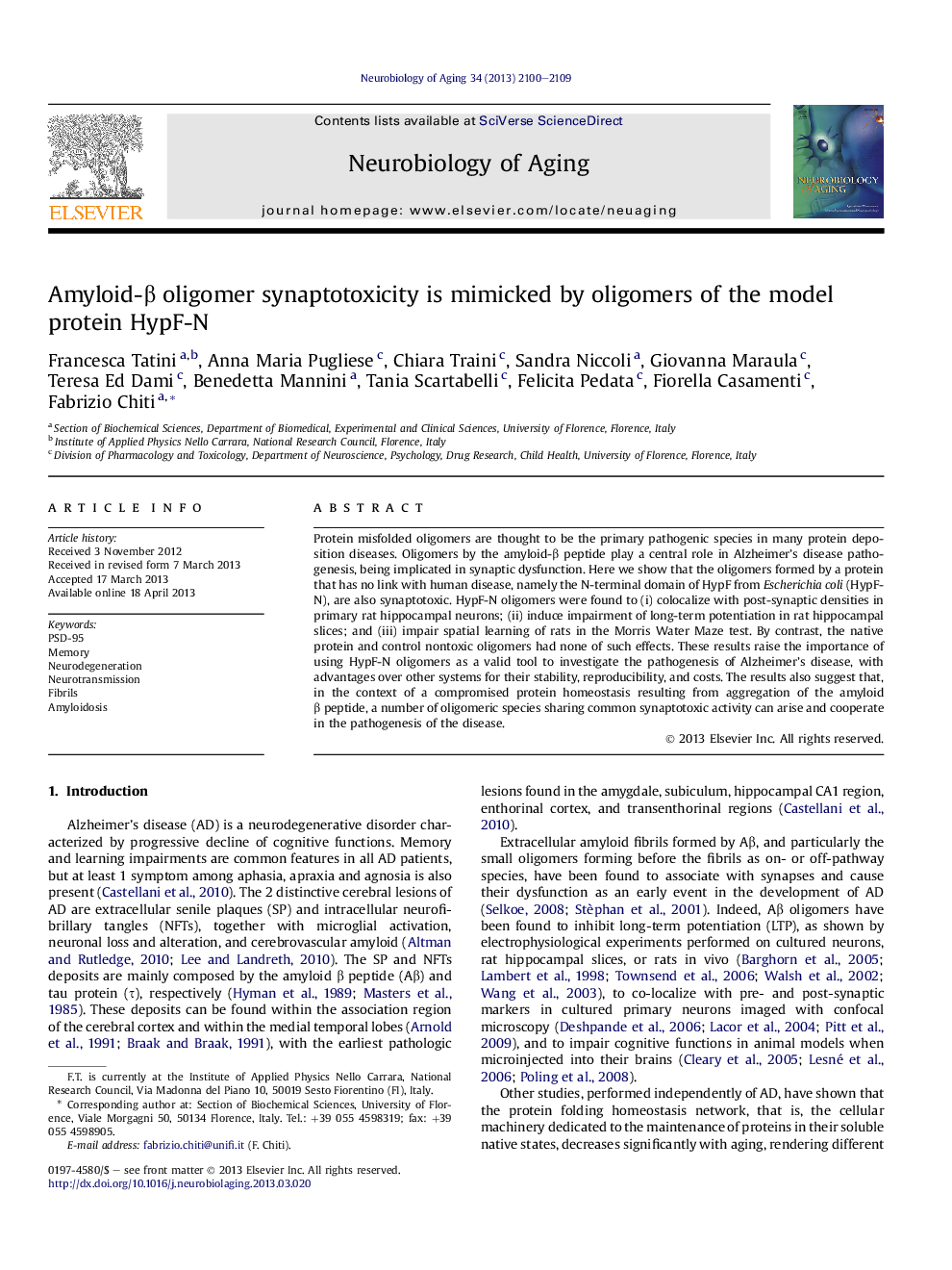| Article ID | Journal | Published Year | Pages | File Type |
|---|---|---|---|---|
| 6807070 | Neurobiology of Aging | 2013 | 10 Pages |
Abstract
Protein misfolded oligomers are thought to be the primary pathogenic species in many protein deposition diseases. Oligomers by the amyloid-β peptide play a central role in Alzheimer's disease pathogenesis, being implicated in synaptic dysfunction. Here we show that the oligomers formed by a protein that has no link with human disease, namely the N-terminal domain of HypF from Escherichia coli (HypF-N), are also synaptotoxic. HypF-N oligomers were found to (i) colocalize with post-synaptic densities in primary rat hippocampal neurons; (ii) induce impairment of long-term potentiation in rat hippocampal slices; and (iii) impair spatial learning of rats in the Morris Water Maze test. By contrast, the native protein and control nontoxic oligomers had none of such effects. These results raise the importance of using HypF-N oligomers as a valid tool to investigate the pathogenesis of Alzheimer's disease, with advantages over other systems for their stability, reproducibility, and costs. The results also suggest that, in the context of a compromised protein homeostasis resulting from aggregation of the amyloid β peptide, a number of oligomeric species sharing common synaptotoxic activity can arise and cooperate in the pathogenesis of the disease.
Related Topics
Life Sciences
Biochemistry, Genetics and Molecular Biology
Ageing
Authors
Francesca Tatini, Anna Maria Pugliese, Chiara Traini, Sandra Niccoli, Giovanna Maraula, Teresa Ed Dami, Benedetta Mannini, Tania Scartabelli, Felicita Pedata, Fiorella Casamenti, Fabrizio Chiti,
